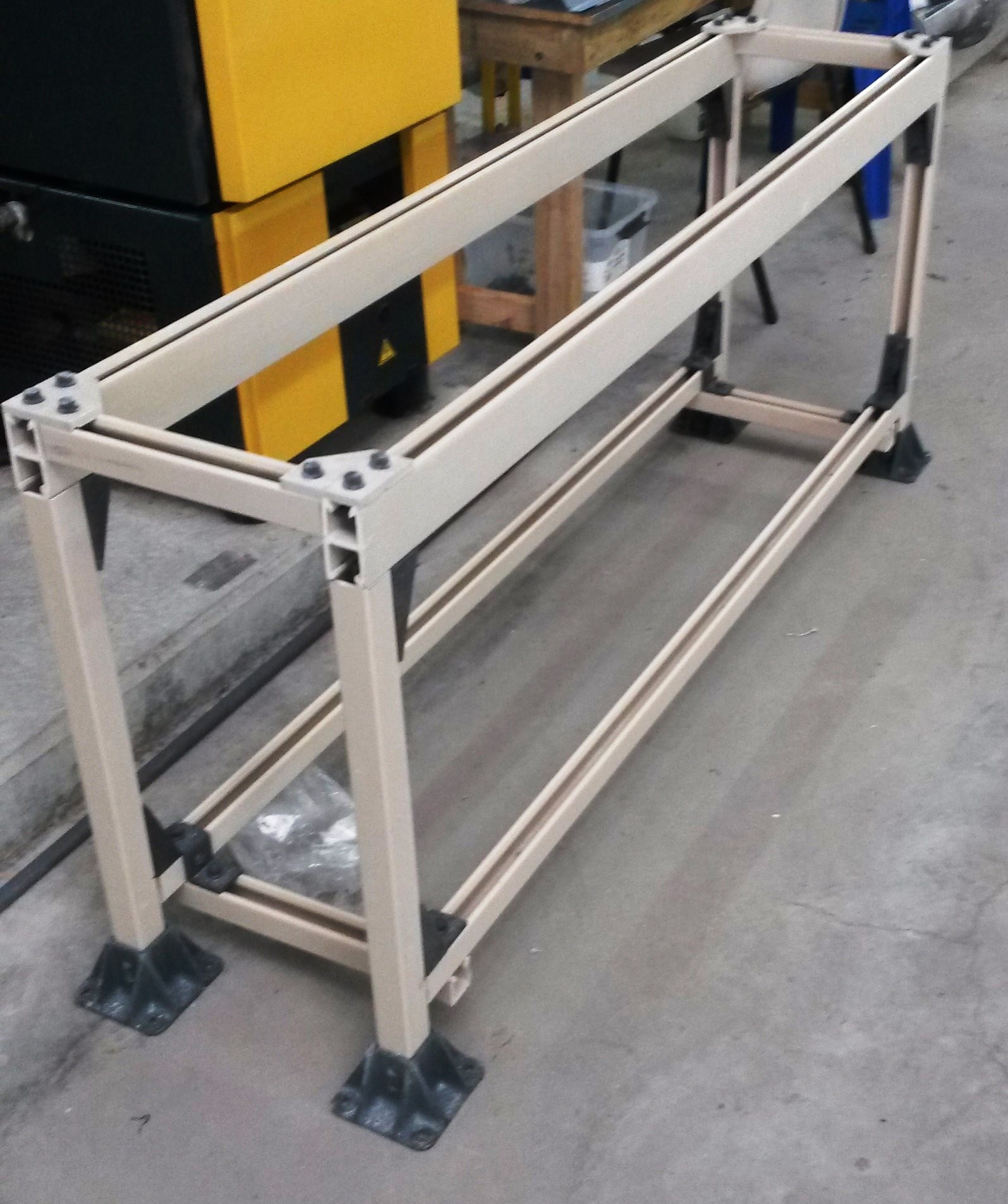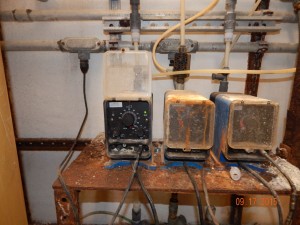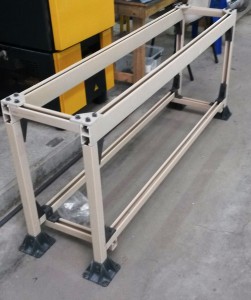Fiberstrut vinylester channel, fasteners and brackets are ideal for construction of chemical dosing skid frames where 100% chemical resistance is desired. For chemicals like sodium hypochlorite, hydrochloric acid, sulphuric acid, fluorosilicic acid (FSA) ferric chloride and chlorine gas, dosing skids have traditionally been constructed from gal steel or stainless steel and subsequently epoxy painted. Of course, the painted steel looks good for the first few weeks. Eventually, the base metal corrodes either from a chemical spill or from chemical fumes. The result is an ugly plant room, costly removal of equipment and replacement of channel and fixings some months down the track.
One of our customers recently provided chemical dosing skids for a water authority to replace existing skids that had corroded and failed. They chose to use Fiberstrut channel to mount dosing boards to the wall and for fabrication of pump stands. The stands were assembled from cut pieces of Fiberstrut vinylester channel, angle brackets, bolts, nuts and post bases. One key feature is chemical resistance. The dosing pumps will require maintenance and when disconnected, some chemical may drip onto the pump stands. If this happens, the chemical can be washed off and no corrosion will occur.
Dioxide Pacific stocks a comprehensive range of Fiberstrut channel and components. Please download the Catalog.
It may be worth considering the use of Fiberstrut for your next chemical dosing installation. Please contact us and we will send you a price list.

 Fabrication
Fabrication 










